Introduction
“It is not the employer who pays the wages. Employers only handle the money. It is the customer who pays the wages.” – Henry Ford, from his book, My Life and Work.
When it comes to business, customer retention is key. Maintaining a successful business is essential to keeping your existing customers happy and engaged. But what exactly is customer retention? And how can you make sure your company is doing everything possible to increase retention rates?
Customer retention refers to the ability of a business to keep its existing customers happy and loyal over time. This can be measured by the percentage of customers who continue to purchase or use the company’s services over a certain period. Companies focus on customer retention to increase revenue and reduce marketing costs associated with acquiring new customers.
Following are some of the things we’d like to address on this blog:
- What is customer retention, and why is it important for businesses?
- The different types of customer retention strategies.
- How to increase customer retention for your company?
- The benefits of increasing customer retention rates.
- Impact Stories of companies with successful customer retention programs.
How to calculate customer retention?
Customer retention is a vital factor for businesses of any size. It refers to the ability of a company to keep its customer base over time, often measured by customer loyalty and purchases. Customer retention can be further bolstered with the help of Customer Relationship Management (CRM) and marketing automation platforms that allow companies to provide tailored customer experiences and receive real-time feedback. Making customer retention a priority will help a business maintain customer satisfaction and engagement levels and improve customer lifetime value. By recognizing customer needs, businesses can develop strategies to sell more products and services to returning customers and increase profitability in the long term.
There are several ways to calculate customer retention, but one common method is to use the following formula:
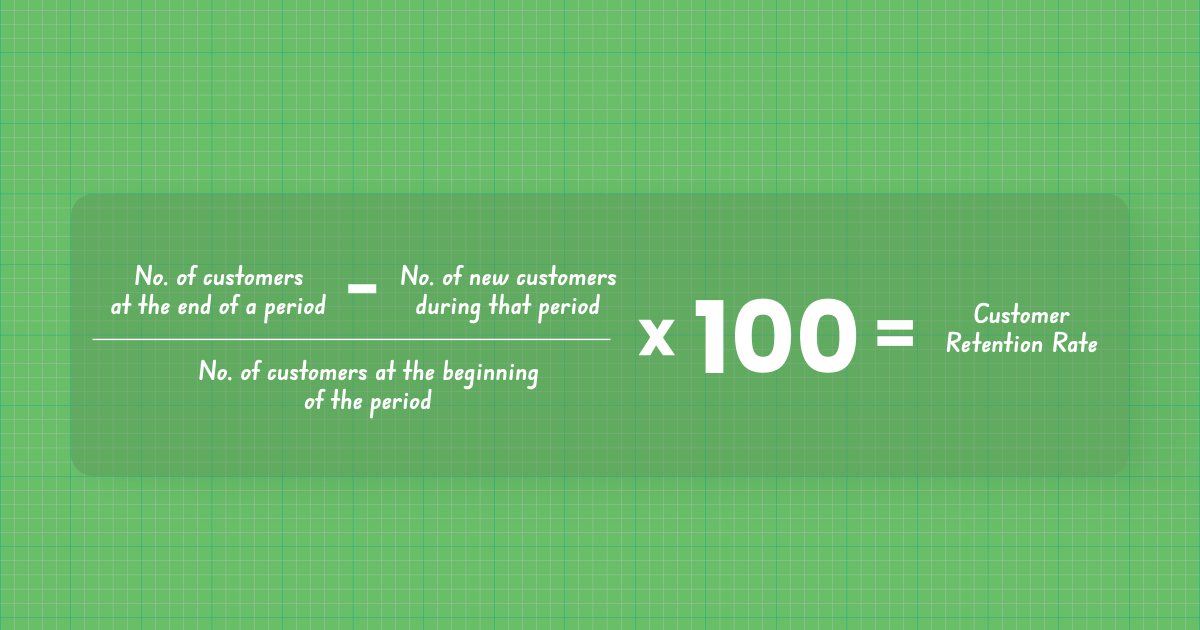
For example, let’s say a business starts the year with 100 customers, and at the end of the year, it has 110 customers. During the year, the business acquired 20 new customers. The customer retention rate for that year would be:
((110 – 20) / 100) x 100 = 90%
This means that 90% of the business’s customers from the beginning of the year were still customers at the end of the year.
What are the ways to increase customer retention?
Customer retention is an essential part of any business’s success. It requires creative and innovative strategies targeting existing customers to maximize their lifetime value. Depending on the unique needs of each company and its customer base, those strategies include personalizing offers to improving communication with customers or providing incentives for returning customers.
Other options include loyalty rewards programs and discounts, satisfaction surveys, online recommendations, and content marketing campaigns. Ultimately, businesses should use a combination of approaches tailored to their specific customer audience’s tastes and preferences to create the most effective customer retention plan.
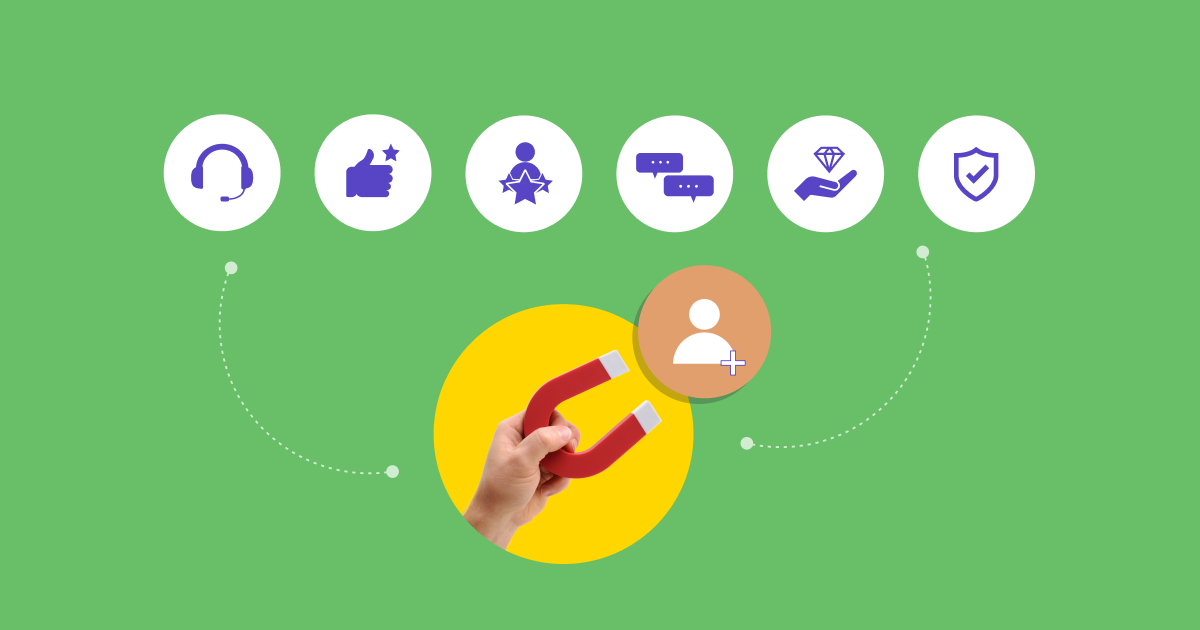
Studies have shown that an effective customer retention program can greatly benefit businesses through increased customer loyalty, improved lifetime value, and enhanced reputation. Examining case studies of companies with successful customer retention programs can provide further insight into what it takes to achieve similar success.
Companies such as Amazon, which offers a Prime membership service to its customers, and Starbucks, which has implemented a rewards system for frequent customers, are two prominent examples of businesses that have enjoyed strong customer loyalty due to their well-planned customer retention programs. By studying how these and other companies have implemented successful customer retention initiatives, businesses can gain useful insight into how they, too, can maximize the effectiveness of their respective customer retention strategies.
Providing excellent customer experience:
Excellent customer experience is important in cultivating long-term customer relationships and increasing customer retention. Businesses should focus on providing a personalized, high-quality experience for each customer. This includes quickly addressing customer issues and questions to ensure satisfaction, understanding their needs and adapting services accordingly, and continuously utilizing feedback to improve the customer experience. Businesses can create great customer experiences by providing these services, leading to strong and loyal relationships.
One example of a brand that retains customers by providing an excellent customer experience is Zappos. Zappos is an online shoe and clothing retailer known for its exceptional customer service.
Zappos’ customer experience provides via free and fast shipping, easy returns, 24/7 customer service, and by providing personalized recommendations and remembering past purchases.
By providing a customer experience that is convenient, easy, and personalized, Zappos has built a loyal customer base that is willing to return to the brand time and time again.
Building a strong brand:
Customer retention is also one of the benefits of brand building. Brands that give customers a unique identity and create a lasting impression stand the test of time. Crafting a message that resonates with customers, using visuals or language to be memorable, and staying consistent in its values are all important steps toward building a strong brand. Doing so can help them remain relevant and connected to their customers, thus increasing customer loyalty and retention.
Apple is an example of a company that retains customers by building a strong brand. Apple is a technology company known for its innovative products and distinctive design aesthetic. By building a strong brand for quality, innovation, and style, Apple has created a loyal customer base willing to pay a premium for its products and services. Customers want to be associated with the Apple brand because it aligns with their values and aspirations and signals their identity and status to others.
Creating a loyalty program:
Creating a loyalty program for customer retention can be a great way to improve customer satisfaction, build loyalty and incentivize customers to keep coming back. A successful loyalty program allows customers to get rewards or discounts for making repeat purchases, encouraging brand loyalty and boosting your bottom line. You could also add exclusive offers for special occasions such as birthdays or anniversaries. This will show your customers that you value them and increase the likelihood that they will return repeatedly.
Starbucks’ customer loyalty program, called ‘Starbucks Rewards,’ has several features that help the company retain customers. By providing a loyalty program that rewards customers for their purchases and provides personalized perks and benefits, Starbucks has built a loyal customer base willing to spend more and visit more frequently. The program has also helped Starbucks collect valuable customer data and insights, which it can use to improve the customer experience and develop new products and services.
Communicating regularly:
Retention and engagement are two sides of the same coin. To retain, one must engage. This may involve sending periodic emails reminding customers of the company’s mission and values, providing updates on new products or services, offering special discounts, or simply staying in touch with helpful content relevant to their interests. Studies have shown that regular communication can act as a reminder of a company’s presence and its commitment to the customer’s satisfaction, inspiring trust and loyalty over time.
Amazon is an e-commerce company that uses email, push notifications, and other communication channels to stay in touch with its customers and provide them with personalized and relevant content. By communicating regularly and relevantly with its customers, Amazon has built a strong brand trusted and valued by its customers. Customers appreciate the personalized and relevant content that Amazon provides, which helps them find products they need and discover new products they might like. The company’s communication strategy also helps it build customer loyalty and increase customer lifetime value.
Providing value:
Businesses today invest heavily in their customer retention strategies, deploying a wide range of tactics that may include providing free resources, discounts, and other exciting perks. All these approaches are tailored towards encouraging customers’ continued loyalty and appreciation for the product or service. Companies must carefully craft these schemes accordingly to ensure they remain effective.
A company that retains customers by giving out free resources, discounts, and other exciting perks is Ulta Beauty. Ulta Beauty is a beauty retailer that offers a loyalty program called ‘Ultamate Rewards,’ which provides members with a range of perks and benefits. Ulta Beauty has developed a devoted customer base willing to spend more and visit more frequently by offering free resources, discounts, and other exciting benefits. The company’s rewards program also assists it in gathering important client information and insights, which it can use to enhance customer satisfaction and create new goods and services. Ulta Beauty has become one of the top beauty shops in the US because of its Ultamate Rewards program.
Building trust:
Trust between brand and customer can take millions from the expenditure column of your balance sheet to the income column. This trust is built through transparency, openness, honesty, and quality products or services. Establishing meaningful connections with customers by listening to their needs and concerns builds loyalty. Investing in customer experience is also important, and clients need to feel valued, appreciated and cared for to build strong relationships with the brand.
Finally, providing customers with a transparent problem-resolution process can show them that the business takes feedback seriously and strives to meet customer expectations. When done correctly, it boosts customer satisfaction and repeats business.
One example of a company that retains customers by building trust is Toyota. Toyota is a multinational automotive manufacturer known for its reliable and high-quality vehicles. By creating trust with its consumers, Toyota has established a loyal client base willing to buy Toyota vehicles frequently and promote them to others. The company has become one of the top automakers in the world thanks to its emphasis on quality, safety, sustainability, and customer service.
By implementing these strategies, businesses can create a positive customer experience and increase the likelihood that customers will continue to do business with them.
Models of Customer Retention
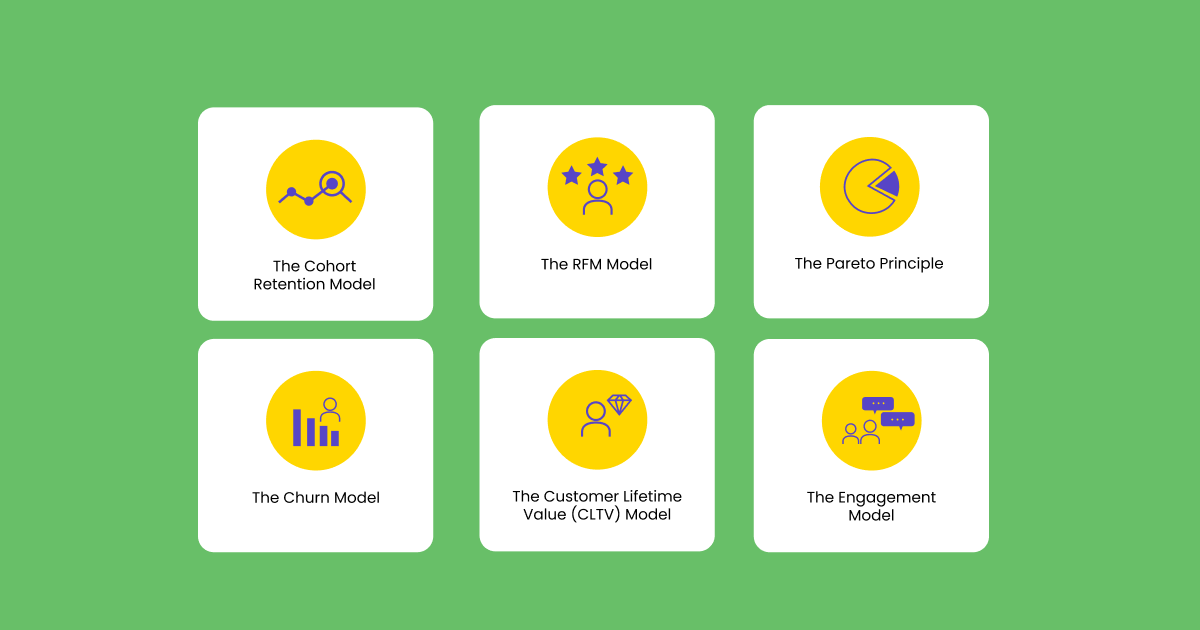
The Cohort Retention Model:
This model groups customers based on when they first became a customer and then tracks how many of them continue to do business with the company over time.
The customer retention cohort model is an analytical approach businesses use to gain insights into customer retention issues. By breaking customer data down into specific cohorts based on customer characteristics or lifecycle stages, companies can identify customer behavior trends over time and develop strategies for improving customer loyalty and retention. When combined with other customer analytics tools to measure engagement, customer lifetime value, and unique customer journeys, the cohort retention model becomes a powerful tool for businesses to understand their customers better and provide improved customer experiences.
This model is most appropriate when analyzing how well your business retains customers over time, especially when introducing new products, services, or marketing campaigns. It helps identify trends, compare customer segments, and understand the effects of specific changes on customer retention.
The RFM Model:
The RFM model, short for Recency, Frequency, and Monetary value, provides businesses with an effective way to track customer purchases and make decisions when targeting certain customer segments. The model enables customer segmentation based on when they bought something, how often they bought something, and how much they bought it for. Businesses can target their most valuable customers and increase customer loyalty by leveraging customer data profile data. For example, it helps identify customers who have been inactive or are at risk of churning. For this reason, the RFM Model can be a great tool for companies looking to leverage customer data for customer retention strategies.
This model works well when you wish to segment your clients depending on their shopping habits. It is particularly beneficial for companies with sizable customer bases and many transactions. Use this technique to identify high-value clients, personalize marketing initiatives, and concentrate on enhancing segment retention.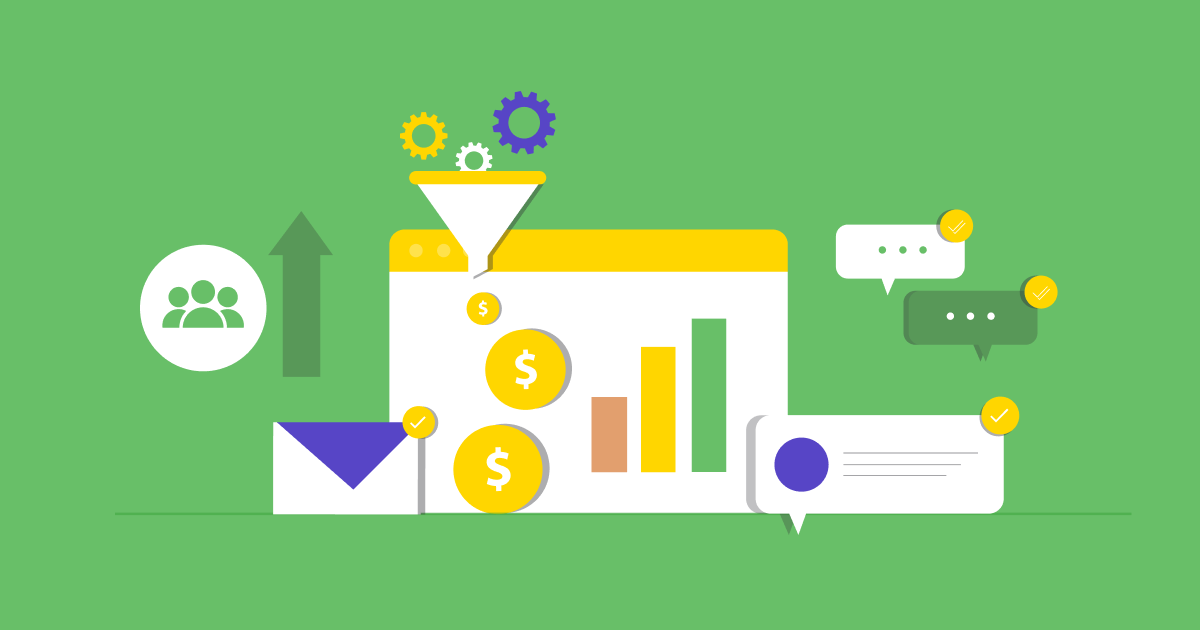
The Pareto Principle:
The Pareto Principle, or the 80/20 rule, is an important tool for customer retention strategies. It states that roughly 80% of outcomes are determined by 20% of inputs—this can be applied across any number of customer relationships. This means companies must focus on the 20% that champions their customer journey for 80% of their profits if they want to maintain customer retention and loyalty. Companies can do this by focusing resources like customer service and support in more individualized ways to create more meaningful customer experiences that keep them coming back time after time.
Apply the Pareto Principle when prioritizing your resources and efforts on the most valuable customers. It’s most useful when you have limited resources and need to focus on the customers who generate the most revenue or engagement for your business.
The Churn Model:
A churn model is a customer retention tool businesses use to predict customer attrition. It provides insights that can help identify customers likely to end their relationship with the company and adjust strategies to prevent customer churn or defections – before they occur. The churn model considers customer characteristics, behaviors, and other relevant factors from different customer touchpoints, then uses machine-learning algorithms to forecast customer retention. As such, it is highly recommended for businesses that rely on customer loyalty for long-term success, especially in industries with high turnover rates.
When attempting to forecast and curtail customer attrition, this model works well. Particularly sectors with a high customer churn rate or subscription-based enterprises can benefit from it. Use this approach to pinpoint your retention strategy, identify customers at risk of leaving, and track their success.
The Customer Lifetime Value (CLV) Model:
The customer lifetime value (CLV) model is essential for understanding customer behavior and forming customer retention strategies. It works by assessing the benefit of customer loyalty by calculating an estimate of a customer’s future value over the entirety of their customer relationship. It considers customer characteristics such as purchase history, customer segments, expected lifespan, and revenue levels. The CLV model can inform decisions about segmenting customers, pricing strategies, and other customer-related initiatives. Companies that use the model appropriately can create sustainable customer retention plans that will optimize the value of a business’s customer relationships in the long term.
Use the CLV model when you want to estimate the total value a customer will bring to your business over the course of their relationship with you. This model is particularly useful for making strategic customer acquisition, retention, and marketing investment decisions. It helps businesses prioritize customers based on their potential long-term value.
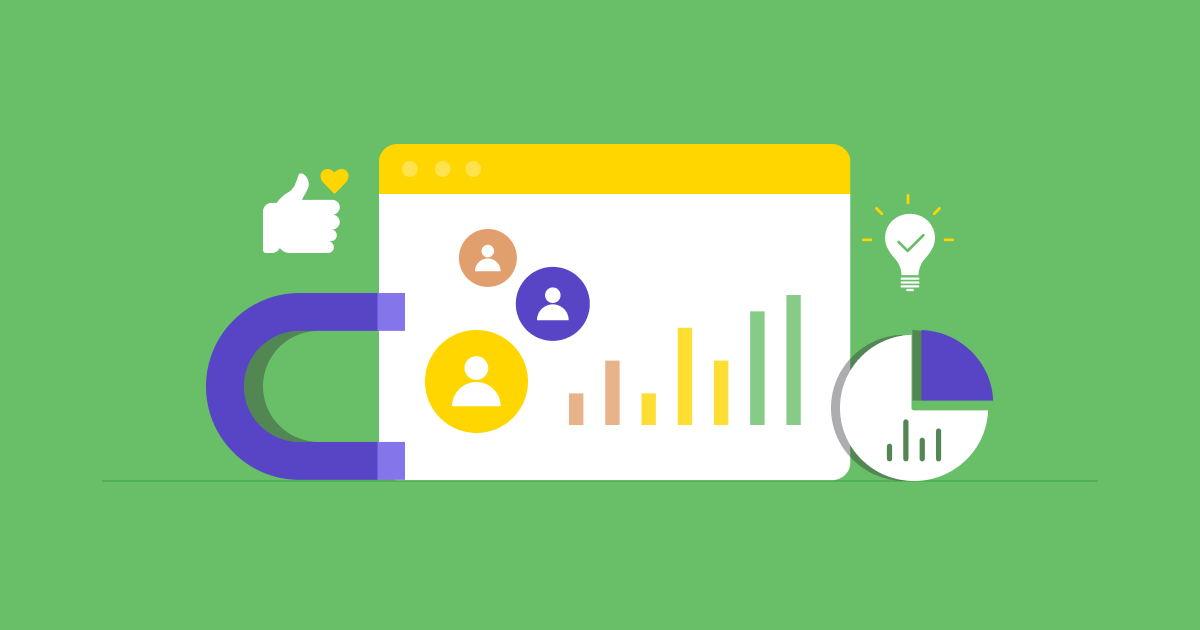
The Engagement Model:
The Engagement Model is a customer retention tool businesses use to promote customer loyalty and gain customer insights. By using customer behavior, businesses can develop strategies for meaningful customer engagement. For example, the model can be used to determine customer spending patterns, customer preference for services or products, channels of engagement preferred by customers, and customer target segments. When used in customer retention strategies, businesses can use customer insight from the Engagement Model to increase customer satisfaction and provide hyper-personalized experiences by understanding customer needs and expectations.
This model is most appropriate when measuring and improving customer engagement with your brand, products, or services. It benefits businesses that rely heavily on social media, online communities, or content marketing. Use this model to track engagement metrics, identify patterns, and develop strategies to increase customer interaction and satisfaction.
Each model has its strengths and weaknesses; the choice will depend on the specific business and its goals.
Customer Retention Metrics
Customer retention metrics become increasingly important in business as customer loyalty is a key indicator of success. These metrics measure customer behavior to determine the likelihood of customers staying with the business rather than switching to a competitor.
By utilizing customer retention metrics, businesses can better align their services with customer demands and needs and forecast future financial returns. This data can provide valuable insights into customer trends and inform product development decisions.
There are several metrics that businesses use to track and measure customer retention, including:
- Retention Rate: This metric calculates the percentage of customers that continue to do business with a company over a specific period.
- Customer Retention Rate (%) = [(Number of customers at the end of the period – Number of new customers acquired during the period) / Number of customers at the start of the period] x 100
- Churn Rate: This metric calculates the percentage of customers that stop doing business with a company over a specific period.
- Churn Rate (%) = (Number of customers lost during the period / Number of customers at the start of the period) x 100
- Repeat Purchase Rate: This metric calculates the percentage of customers that make multiple purchases over a specific period.
- Repeat Purchase Rate (%) = (Number of customers with more than one purchase during the period / Total number of customers during the period) x 100
- Net Promoter Score (NPS): This metric measures customer loyalty and satisfaction by asking customers how likely they are to recommend a business to others.
- Net Promoter Score = Percentage of Promoters – Percentage of Detractors
To calculate NPS, you must first collect customer feedback using a survey. The survey typically asks customers how likely they are to recommend your product or service to others on a scale of 0 to 10. Based on their responses, customers are then classified into three categories:
Promoters (score 9-10): Loyal customers likely to recommend your product or service. Passives (score 7-8): Satisfied but unenthusiastic customers who competitors might sway. Detractors (score 0-6): Unhappy customers who are unlikely to recommend your product or service and might even dissuade others from using it.
To calculate the NPS, you need to determine the percentage of promoters and the percentage of detractors:
Percentage of Promoters = (Number of Promoters / Total number of respondents) x 100
Percentage of Detractors = (Number of Detractors / Total number of respondents) x 100
Then, subtract the percentage of detractors from the percentage of promoters to obtain your NPS. NPS can range from -100 (all detractors) to 100 (all promoters). A positive NPS is generally considered a good indicator of customer satisfaction and loyalty.
- Customer Satisfaction Score (CSAT): This metric measures customers’ satisfaction with a business’s products or services.
- Customer Satisfaction Score (CSAT) = (Total Sum of Satisfaction Ratings / Total Number of Respondents) x 100
- Customer Effort Score (CES): This metric measures how easily customers can do business with a company.
- Customer Effort Score (CES) = (Total Sum of Effort Ratings / Total Number of Respondents)
- Customer Lifetime Value (CLV): This metric calculates the total value a customer will bring to a company over their lifetime.
- Customer Lifetime Value = Average Purchase Value x Purchase Frequency x Average Customer Lifespan
Engagement Metrics: This metric tracks how much a customer interacts with a company, such as the number of visits, clicks, shares, etc.
Businesses should track these metrics over time to understand how they retain and lose customers and how they can improve their retention. In conclusion, using customer metrics is invaluable for analyzing long-term customer loyalty and optimizing marketing strategies to ensure sustained growth.
Conclusion
Companies focusing on customer retention keep their current customers and save on marketing and acquisition costs. While businesses can use many strategies to increase customer retention, some of the most effective include creating loyalty programs, providing excellent customer service, and constantly optimizing user experience. By increasing customer retention rates, businesses can enjoy a number of benefits, including improved brand reputation, increased revenue, and lower costs.
Are you looking for ways to improve customer retention at your company? Check out these case studies of companies with successful customer retention programs to learn more about what has worked for other organizations.
Take a Demo Now – Deliver Meaningful Messages For Your Business Today




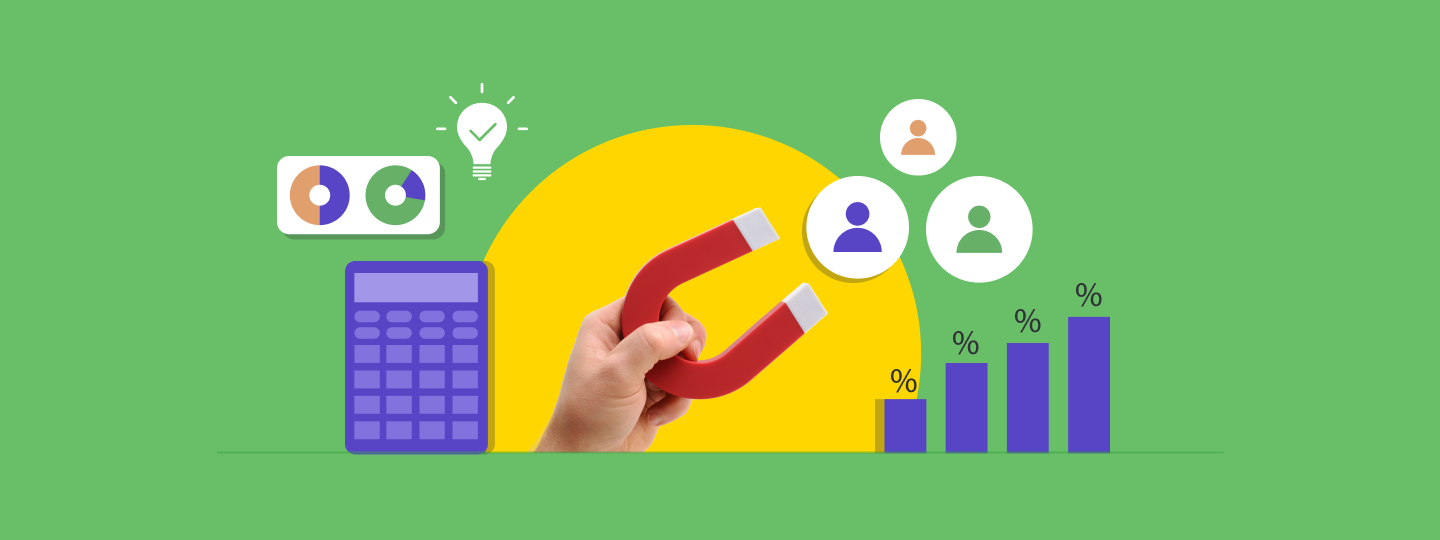


 Prakhya Nair
Prakhya Nair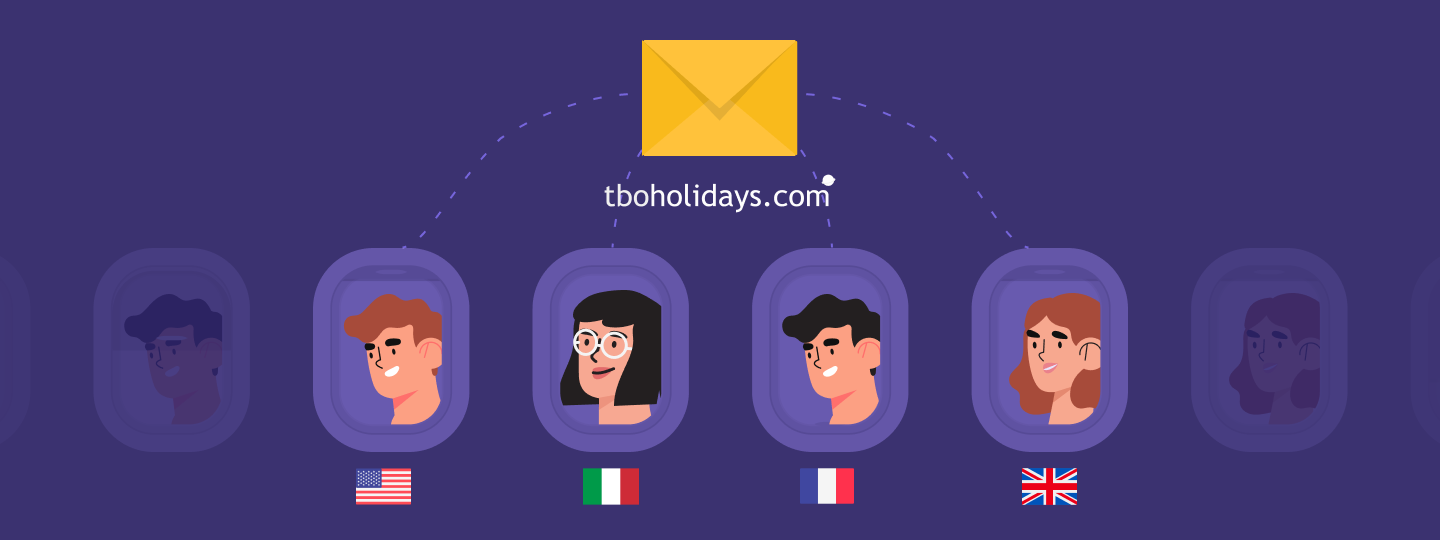
 Dev Iyer
Dev Iyer
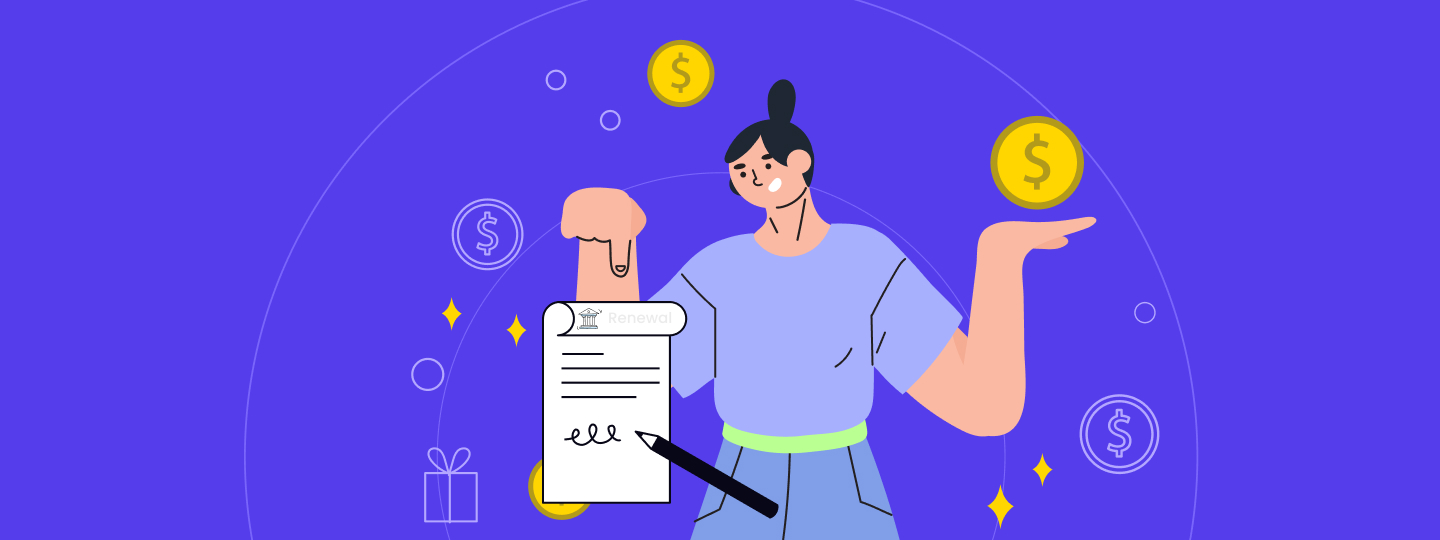
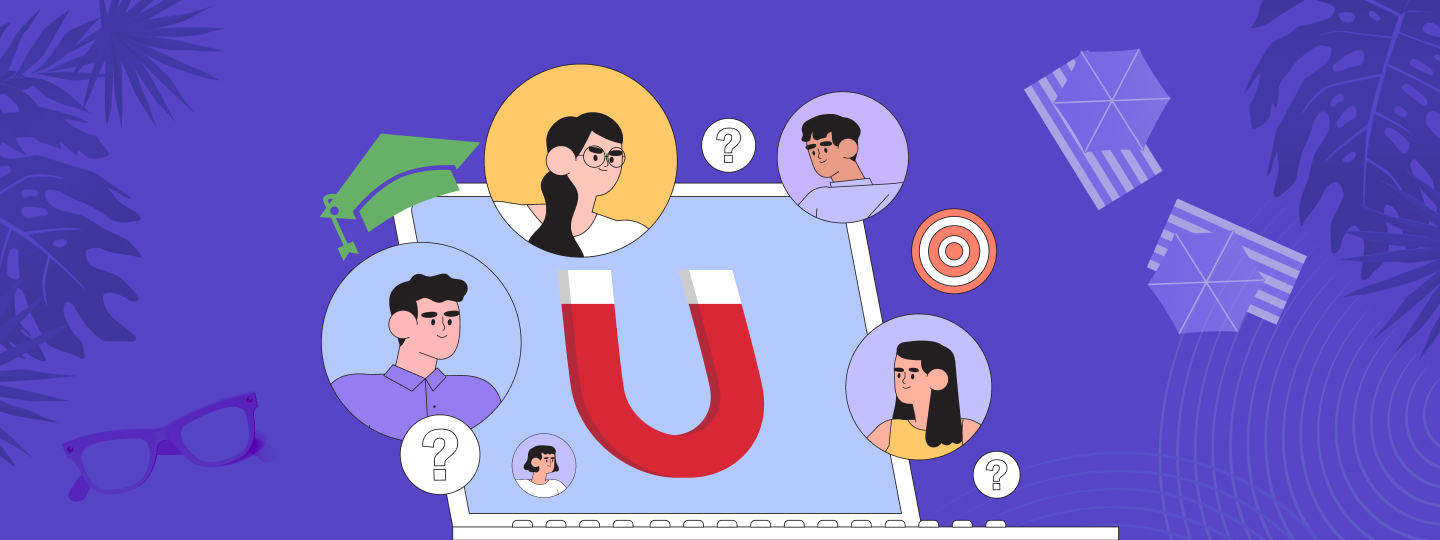
 Vanhishikha Bhargava
Vanhishikha Bhargava